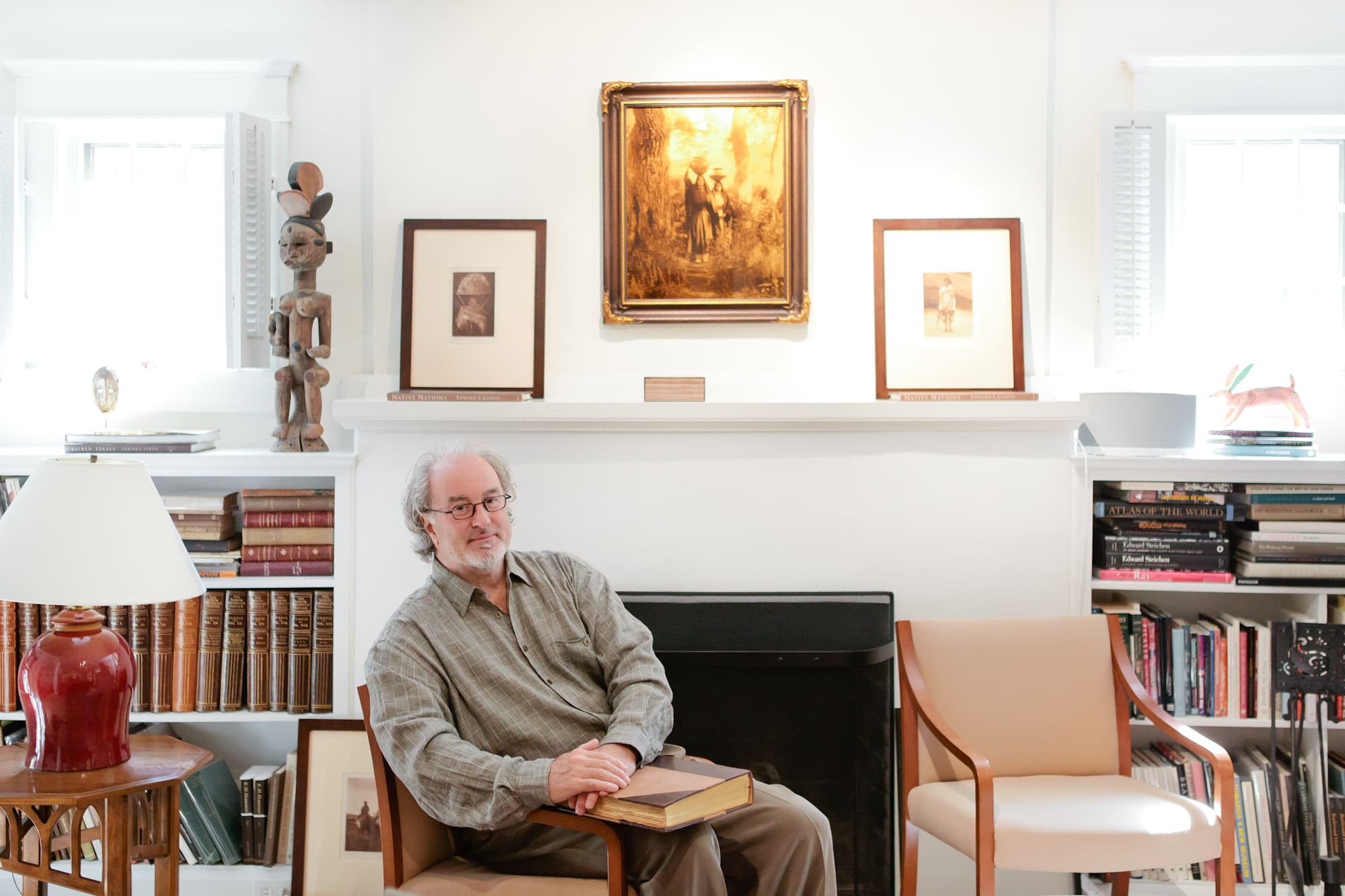Forty years is a long time to devote to another person. A commitment of that intensity would be difficult to sustain if the relationship didn’t offer substantial rewards. Christopher Cardozo, who has dedicated the past four decades to collecting and disseminating the work of celebrated Wisconsin son Edward S. Curtis, has no doubt that the benefits he has reaped have more than repaid his efforts.
“Collecting Curtis’s work has profoundly informed my life,” notes Cardozo, surrounded by Curtis photographs in his Minneapolis home near Lake of the Isles. “It’s been a window and a mirror. It has helped me understand so many things about myself and about the world.”
Cardozo’s unwavering commitment to Curtis parallels the famed photographer and ethnologist’s own dogged determination during the first 30 years of the 20th century to create a record of native North Americans in photographs and words. The resulting 20-volume set of The North American Indian stands as a landmark achievement in the arenas of photography, publishing and ethnographical research.
The life trajectories of Curtis, who is the subject of several sesquicentennial celebrations this year, and Cardozo, who celebrates his 70th birthday this year, have intersected in surprising ways. Both had their first significant exposure to photography as teens in St. Paul, Curtis as an apprentice in a portrait studio and Cardozo as a high-school student. And both had transformative experiences in faraway places among native peoples.
Curtis’s watershed experience happened the summer of 1900, when he accompanied prominent anthropologist George Bird Grinnell on an expedition to Montana. There, living among the Blackfoot people, he witnessed one of the last great enactments of the sun dance ceremony before it was outlawed by the federal government. Because Grinnell had earned the trust of the Blackfoot people over the course of 20 seasons of fieldwork, they were willing to talk with Curtis about their personal histories and their spiritual beliefs and practices.
Although by this time Curtis had established a successful portrait studio in Seattle, he hit the road again soon after returning from Montana, this time on a self-financed trip to Arizona to photograph the Navajo and Hopi peoples. After that, Cardozo explains, Curtis “never turned back. That became his life, his passion.”
For Cardozo’s part, soon after graduating from the University of Minnesota with a BFA in photography and film, he drove to Mexico to help a professor make a film. The instructor ultimately chose not to pursue the project, but he did suggest Cardozo explore a tiny village high in the Sierra Madre mountains of Oaxaca. He ended up spending almost six months there, taking photographs, shooting film and making sound recordings.
“It was probably the most incredible experience I had ever had in my life,” says Cardozo. “Most of the people thought they lived on an island. There was no electricity. There was very little contact with the outside world. Most of them had never heard of the United States.” Because the native people spoke an obscure, unwritten dialect, Cardozo would go for days without speaking to anyone. That left him free to observe and to film what he observed.
Cardozo’s first fateful Curtis encounter came in 1972, a day or two after returning from his Mexican sojourn. He stopped off in Albuquerque, New Mexico, to visit a friend and fellow photographer and to show her the prints he had made of his photos from the Oaxacan village. She insisted he see the work of Edward S. Curtis, which had just become available for the first time in a contemporary book. When Cardozo laid eyes on the tome, he felt “a shock of recognition” at seeing photography so reminiscent of what he had just shot.
Back on the road to Minnesota, Cardozo made another stop in Boulder, Colorado, to see more friends, including a Native American art dealer from St. Paul. When Cardozo showed him his newly acquired book, the art dealer informed him that a group that had recently purchased the mother lode of Curtis archives was supplying a small gallery right there in town. The gallery turned out to have several photogravures intended to go into volumes of The North American Indian. After some internal debate, Cardozo ended up buying two of them for $35 apiece.
“That was the start of it,” he says, reflecting on his first steps along the Curtis trail. Having worked for a few months and saved a few thousand dollars, Cardozo spent it all on Curtis prints. In order to recoup some of his investment, he sold some prints, establishing the strategy he pursued for the next several decades as he built what is widely acknowledged to be the broadest Curtis collection in the world.
Although Cardozo takes great pleasure in owning such a rich cache of Curtis’s work, he also gains great satisfaction from sharing that work with others. Over the years, he has published books about Curtis, mounted international exhibitions of his photography, printed and sold contemporary photography made from his negatives, and even operated a gallery devoted to him. “I feel a really strong moral obligation to bring his work to the world,” says Cardozo. “It transcends Curtis; it transcends native people. If you look at the best of his work, it is really a profoundly human story.”
This article is from the Artful Living archives. It first appeared in our autumn 2013 issue.








